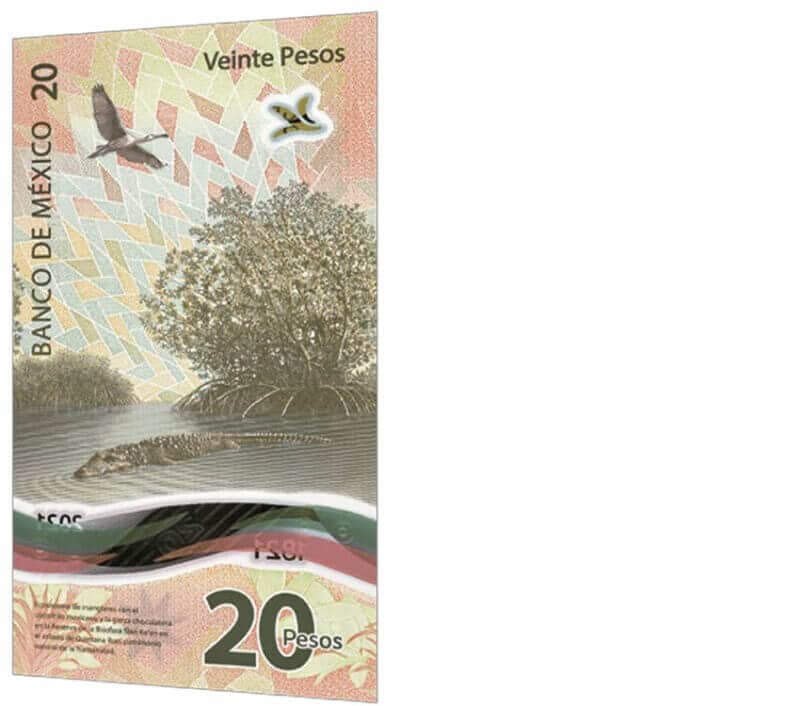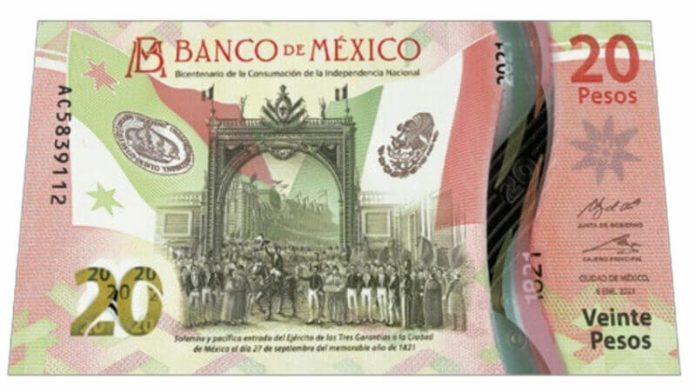The Bank of México has released a new 20-peso bill (about US $1) to honor the 200th anniversary of independence, recalling the moment exactly two centuries ago when the rebel army entered Mexico City. On the following day, September 28 1821, Mexico was declared independent.
The reverse side of the note pays tribute to the country’s natural wealth with an image of the Sian Ka’an Biosphere Reserve in Quintana Roo, a UNESCO Natural World Heritage Site. It features a crocodile and a garza chocolatera, a type of crane also known as roseate spoonbill.
The celebrated former president Benito Juárez has dropped off the 20-peso note, which went into circulation on Friday.
The primarily green and red bill depicts a painting which hangs in Chapultepec Castle called “The Solemn and peaceful entry of the Army of the Three Guarantees into Mexico City on September 27 from the memorable year of 1821” by an anonymous artist. It glorifies the moment the army arrived at Mexico City’s central square, led by Agustín de Iturbide.
The image displays the flag of the army and the Mexican flag side-by-side, and local people celebrating the military arrival.

Another of the Bank of México’s eye-catching designs was internationally applauded earlier this year: a 100-peso bill (about $5) depicting the self-educated nun and intellectual Sor Juana Inés de la Cruz was named banknote of the year 2020 by the International Bank Note Society (IBNS).
A series of events are planned for 2021 to recall two centuries since independence, 500 years since the fall of the Aztec capital Tenochtitlán, and — rather more dubiously — 700 years since the ancient city’s foundation.
In addition to the Sian Ka’an Biosphere Reserve, there are five UNESCO Natural World Heritage Sites in Mexico. Those are: the El Vizcaino Whale Sanctuary in Baja California and Baja California Sur; the Monarch Butterfly Biosphere Reserve, Michoacán; the Revillagigedo Archipelago in the Pacific Ocean; The El Pinacate and Gran Desierto de Altar Biosphere Reserve, Sonora; and the Islands and Protected Areas of the Gulf of California spanning Baja California, Baja California Sur, Sonora, Sinaloa, and Nayarit.
With reports from El País
